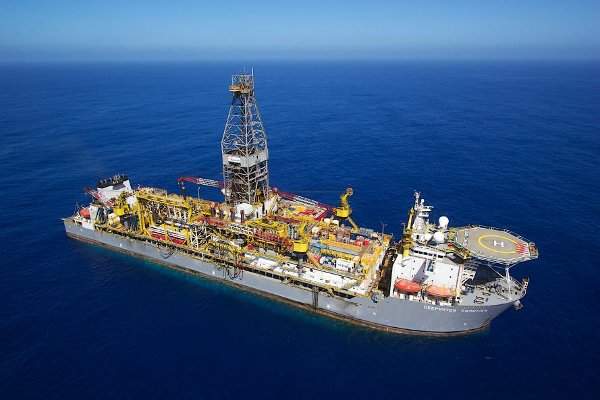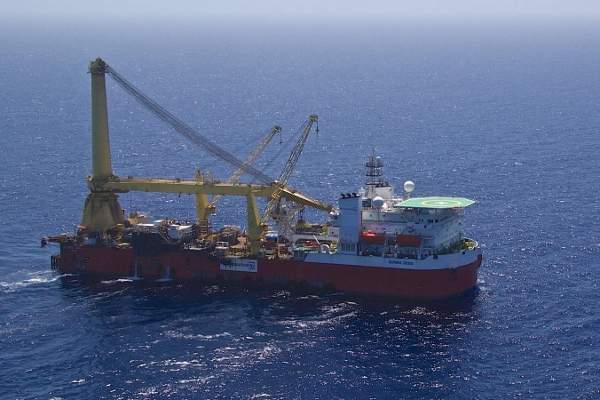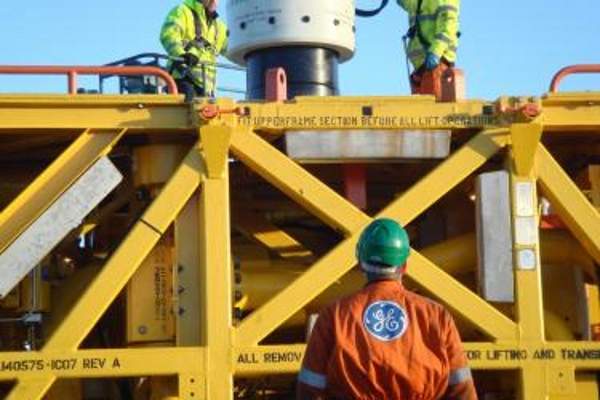The Jansz-Io gas field lies at a water depth of 1,400m, 200km off the northwest coast of Western Australia.
The gas field was developed as part of the larger Gorgon Project, which also involves the development of the Gorgon field offshore and onshore elements including a three-train LNG [liquefied natural gas] plant for producing 15.6Mtpa of LNG, a domestic gas plant for supplying 300TJ of gas a day to Western Australia, CO₂ removal and compression facilities, a 4km-long loading jetty and export pipelines.
The Jansz-Io field’s first two wells were opened to the Jansz-Io pipeline in October 2015. In December 2015, the start-up sequence progressed with the introduction of feed gas into the LNG train, and the first LNG was produced in March 2016. Production at train 3 commenced in March 2017.
The overall investment for the Gorgon Project is estimated to be A$43bn ($36.5bn). The joint venture (JV) partners in the Gorgon Project include Chevron (47.3%, operator), ExxonMobil (25%) and Shell (25%), along with gas buyers Osaka Gas (1.25%), Tokyo Gas (1.0%) and Chubu Electric Power (0.417%).
In July 2021, Chevron announced the $4bn Jansz-Io Compression (J-IC) project aimed at maintaining the production from the Jansz-Io field. The installation phase of the project is expected to take place between 2024 and 2026.
Location
The Jansz-Io fields lie within production licences WA-36-L, WA-39-L and WA-40-L, 70km northwest of the Gorgon gas field.
Discovery and drilling at Jansz-Io offshore field
The Jansz field was discovered in April 2000 by drilling the Jansz-1 discovery well in the WA-18-R permit area. The Io field was discovered in January 2001 by drilling the Io-1 discovery well in the adjacent permit area WA-25-R.
The Jansz field was further appraised by drilling the Jansz-2, Jansz-3 and Jansz-4 wells in 2002, 2003 and 2009, while the Io discovery was appraised in 2006 by drilling the Io-2 well.
The two gas fields were unitised by the Gorgon Project JV in May 2009.
Reserves
The Gorgon and Jansz-Io gas fields are estimated to jointly hold more than 40 trillion cubic feet (tcf) of gas and are expected to have a production life of at least 40 years.
The total production capacity of the fields is estimated to be approximately 2.6 billion cubic feet (bcf) of natural gas and 20,000 barrels of condensate a day.
Jansz-Io field development details
The project is being developed in two phases. The first phase involved the development of ten production wells, including the conversion of the existing Jansz-4 appraisal well to a pressure monitoring well and a subsea tieback to the onshore LNG plant.
A total of ten big-bore development wells are present at the Jansz-Io field with 18 subsea trees in both fields for containment and control of production wells and two manifolds.
The project is supported by an offshore feed gas pipeline system, a monoethylene glycol injection pipeline, and an electro-hydraulic control umbilical. A total of six product pipelines and two umbilical casings for the Jansz-Io and Gorgon operations come onshore on the west coast of Barrow Island.
The wells were drilled from two drill centres, drill centre 1 (DC-1) and DC-2, with five wells located at each site. Transocean Deepwater Frontier, a dynamically positioned drillship, was employed to execute the drilling activities.
A fast-supply and intervention vessel, FOS Polaris, two other supply vessels and a remote-operated vehicle provided offshore support during the drilling phase.
The domestic gas from the gas treatment plant on the east coast of Barrow Island is exported via a 90 km-long pipeline which ties into the existing Dampier to Bunbury natural gas pipeline.
Jansz-Io (J-IC) compression project details
The J-IC compression project will involve the construction and installation of a 27,000t unattended floating field control station tied to the seabed by 12 mooring lines.
The project also includes the installation of a 6,500t subsea gas compression system comprising three compressor modules and two subsea pump modules. It will feature all-electric control systems and actuators, apart from structures such as mud mats, a high-voltage electrical power distribution system and associated infrastructure.
A 135km submarine power cable linked to Barrow Island will also be developed as part of the project.
Contractors involved
The front-end engineering and design studies for the project were performed by the JV of J P Kenny and Technip Oceania. The JV is also the engineering, procurement, construction and management contractor for the project.
Aker Solutions, a provider of oil and gas production technologies, was awarded the front-end engineering design (FEED) contract for the subsea compression system of the J-IC project in March 2019.
In July 2021, Aker Solutions was awarded the contract to supply the subsea compression system for the J-IC project. It won another contract in November 2021 to engineer, design and manufacture 70km of dynamic subsea umbilicals for the project.
Compressor Controls, a turbomachinery control solutions provider, was subcontracted by Aker to compressor control technology and engineering support for the subsea compression system.
Worley, a professional services company, won the contract to provide engineering and construction management services for the J-IC project, while SPIE Oil and Gas, a technical services provider, was awarded a multiyear engineering services contract.
ABB, a technology company, won a $120m contract to supply an electrical power system for the J-IC project, while Baker Hughes, an energy technology company, was contracted to supply subsea compression manifold technology.
Nexans, a cable systems supplier, was contracted to supply high-voltage dynamic cable solutions.
Kent, an engineering services provider, won a contract to deliver detailed engineering, procurement, integration and testing of the telecoms infrastructure package for the FCS.
MAN Energy Solutions, an engines and turbomachinery supplier, was awarded the contract to support the FEED study of the subsea compression solution.
Saipem, an engineering and drilling services provider, Tracerco, a subsea separator measurement and control specialist, Vipo, a thermal, fire and corrosion protection products provider, ABL, an energy and marine consultancy group and Lycaon, a control systems engineering company, are some of the other contractors involved in the project.













